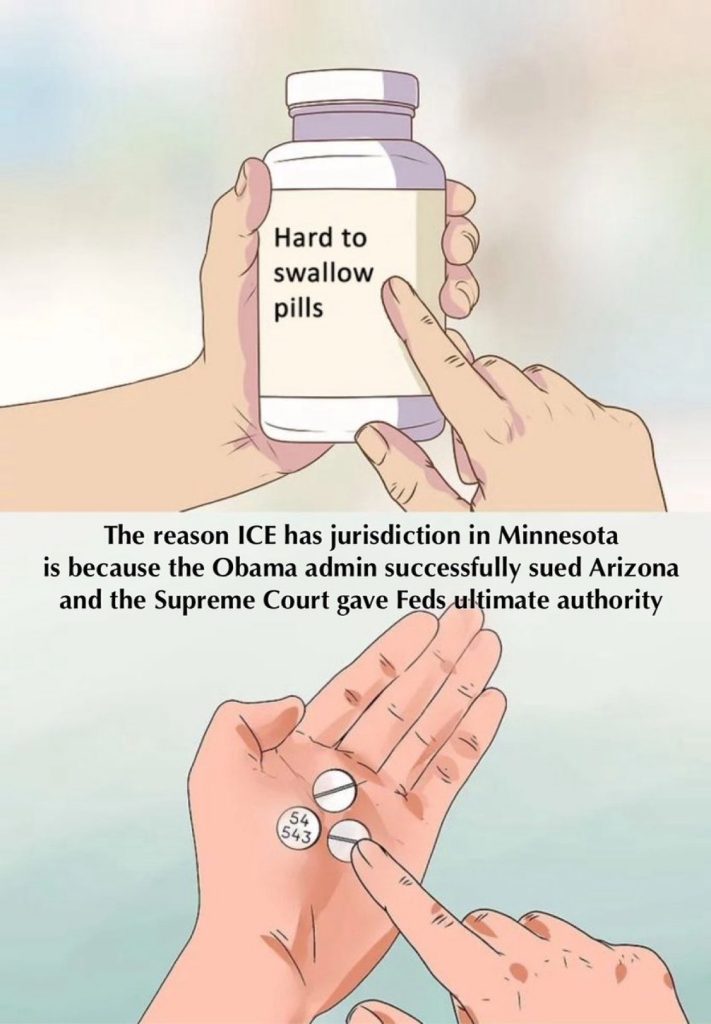Insurrection Barbie:
“COPAL’s own statement thanks Omar and Klobuchar for their leadership and notes that these federal dollars will be invested in worker organizing and community power on Lake Street.”
Susan Du:
As the federal government broadened immigration enforcement in the Twin Cities, a network of neighborhood activists ramped up pushback by keeping tabs on ICE agents and lending aid to families in hiding.
Comunidades Organizando El Poder y la Acción Latina (COPAL) launched its rapid response arm a year ago in response to President Donald Trump’s re-election, seeded by a $1 million grant from the Bush Foundation. More than 10,000 people have registered for its trainings, said Edwin Torres DeSantiago, manager of COPAL’s Immigrant Defense Network. Other organizations are offering variations.
While dramatic clashes between ICE and protesters have gotten the most attention, it’s the smallest aspect of a wider movement, Torres DeSantiago said.
“It is after, before and the prolonged support that we provide to families navigating these dark days,” he said.
JD Vance:
The gaslighting is off the charts and I’m having none of it. This guy was doing his job. She tried to stop him from doing his job. When he approached her car, she tried to hit him.
A tragedy? Absolutely. But a tragedy that falls on this woman and all of the radicals who teach people that immigration is the one type of law that rioters are allowed to interfere with.
John Robb:
The larger organizational context for the incident.
These earlier incidents would have led to daily reminders at briefings, warnings from everyone, legal authorization (it’s assault with a deadly weapon), and specialized training (how to respond with deadly force, building muscle memory).
In short, the moment the car surged forward and pushed that agent with her bumper, the response was predictable.
Jonathan Turley:
During the Cold War, Soviet communists referred to American liberals as “useful idiots,” armchair revolutionaries who spouted proletarian slogans at cocktail parties. Zohran Mamdani and his newly appointed cadre engage in chest-pounding about their intentions to “seize the means of production” while living off their parents or working friends in high society.
Today, they are often young people who joined communist coffee klatches in college under the tutelage of academia’s “radical chic.”
They often reveal little actual historical or philosophical knowledge, which is an advantage if you are going to call for the replication of one of the least successful political theories in history.
Daniel Friedman:
One thing I have not seen a lot of discussion of is why Amy Klobuchar would consider leaving the Senate to run for governor when she is a top contender to replace Chuck Schumer as the leader of the Senate Democrats.
Klobuchar is the only political figure in Minnesota popular enough and powerful enough that her entrance into the race can prevent a contested Democratic primary, which would be a disaster for the Democrats.
Josh Brooks:
What the Right Wants: Psychotic leftist domestic terrorist tries to kill ICE agents! We should use more force.
What the Left Wants: Fascist NAZI psychopaths are murdering women and children! We should use more force.
Who actually wins: Minnesota politicians and bureaucrats who can spin this into a riot and continue to avoid accountability for fraud. Federal politicians who can use the flames to continue to avoid accountability for a billionaire child sex trafficking ring.
Thanks for coming to my TED Talk
Glenn Greenwald:
She was one of the lead lawyers in the key suit against the Biden Administration for violating the 1st Am by coercing Big Tech to censor critics and dissent.
and:
A primary theme of right-wing politics throughout the 1990s and into 2000s (not GOP politics, but right-wing politics) was vehement opposition to armed federal agents on US soil acting against US citizens (things like WACO and the Randy Weaver shootings illustrated that).
Then a GOP administration exploited 9/11 to create DHS, and now armed federal agents under DC’s control on US streets, operating against Americans, is a staple of right-wing politics.
——-
A chronological account of the standoff between the Trump administration and the state of Minnesota over fraud allegations and immigration enforcement.

